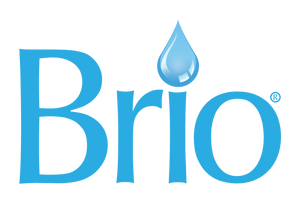By Sheila Anthony
Arizona is so low on water, it’s thinking of importing it, including from sources as far away as the Mississippi River. The governor of Utah recently asked his state’s citizens to pray for rain. And California, already in exceptional drought conditions, may be facing a La Niña winter, which means less rain and snow than normal is forecast, which translates into an even drier 2022.
Severe drought is here. How long will it last? No one knows. But while it’s here, what does it mean for the quality of your home’s water?
“Worsening groundwater quality”
During its last drought, the state of California asked the United States Geological Survey to study the link between drought and groundwater quality in the Central Valley, a major agricultural region that provides the United States with 25% of its food. As reported in the study, the USGS “examined 30 years of data…to find dramatic groundwater-level declines during drought were associated with worsening groundwater quality.”
The USGS discovered that nitrates from agricultural runoff are concentrated in shallow groundwater. As fresh drinking water is rapidly pumped up from the deepest depths of the public well, the shallow groundwater sitting on top of it draws down, in turn becoming the water that is pumped up. (Source: usgs.gov)
High nitrate levels in drinking water have been linked to cancer and can cause something called “blue-baby syndrome” or methemoglobinemia, a condition in which an infant’s blood can’t carry sufficient oxygen.
Another study from researchers at Stanford University reported that overpumping of groundwater in certain areas of the Central Valley increases arsenic levels. As the ground sinks because of the overpumping, layers of sand and gravel press down on layers of clay where arsenic, a naturally occurring contaminant, is trapped. That pressure squeezes the arsenic into the groundwater that’s pumped up.
Higher than recommended levels of arsenic in drinking water have been linked to an increased risk for cancer and type 2 diabetes.
Urban areas are not immune to less than optimal water quality during periods of drought. Surface water sources like rivers and lakes, already diminished by drought, lose additional water via evaporation, putting more pressure on groundwater basins to supply fresh water to communities which, in turn, increases pumping.
Many urban and suburban areas recharge groundwater basins with gray water via ponds or injection wells. Gray water seeps through layers of sediment and is naturally purified on its journey down to the groundwater basin. Despite this replenishment, rapid water depletion occurs during drought, and the result is not only less water, but poorer water quality due to concentration of contaminants. This, in turn, makes your water department’s job more difficult because the water pumped up from the groundwater basin requires additional treatment for it to meet drinking water standards.
What you can do to help
A great way to start is by reducing household water use. Fixing leaks and installing low-flow faucets and toilets are good first steps, but if you own your home, consider putting in a gray water system (also known as a laundry-to-landscape system). As long as you follow certain guidelines, current California code doesn’t require a construction permit to put in a system that reroutes washing machine water to outdoor landscaping for irrigation. (Source: greywateraction.org)
Minimizing personal water usage helps slow groundwater basin drawdown, which preserves both water and water quality.
While you're at it, take control of your home’s water quality with the Brio Moderna 3-Stage Bottleless Water Cooler. A durable, high-quality stainless steel appliance, its 3 stages of filtration remove suspended solids, like rust and dirt, and unpleasant tastes and odors including chlorine. The result is purified water that looks and tastes fantastic.




